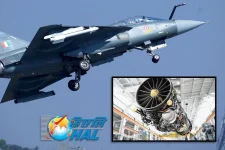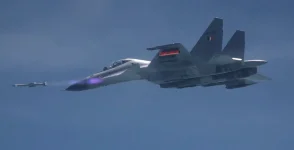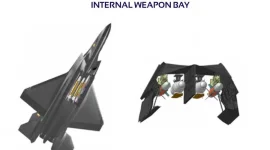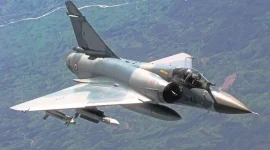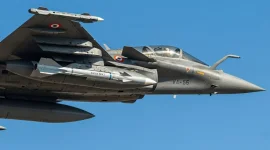India's premier military research agency, the Defence Research and Development Organisation (DRDO), is preparing to begin developmental trials for its next-generation Astra Mk3 air-to-air missile.
Named ‘Gandiva’ after the mythical bow from the Mahabharata, this advanced weapon is set to significantly enhance the combat dominance of the Indian Air Force (IAF).
Even as trials are set to commence, the DRDO is already planning a crucial upgrade for the production version, incorporating a state-of-the-art Gallium Nitride (GaN) seeker to ensure its technological superiority.
The Astra Mk3 represents a major leap in India's missile technology. It is a Beyond-Visual-Range Air-to-Air Missile (BVRAAM), meaning it can engage hostile targets like stealth fighters, bombers, and AWACS aircraft from distances far beyond what the pilot can see, at a projected range of over 300 kilometres.
Unlike its predecessors, which use conventional solid rocket motors, the Gandiva is propelled by a Solid Fuel Ducted Ramjet (SFDR) engine. This air-breathing propulsion system uses oxygen from the atmosphere to sustain flight, allowing the missile to travel farther and maintain high supersonic speeds of up to Mach 4.5.
This technology dramatically increases the missile's "no-escape zone," which is the area within which a target cannot use its speed or agility to evade being hit.
A key enhancement planned for the final production model is the upgrade of its guidance system, often called the missile's "brain."
The current developmental missile uses an Active Electronically Scanned Array (AESA) seeker based on Gallium Arsenide (GaS) technology. However, the DRDO intends to equip the production version with a more powerful AESA seeker built with Gallium Nitride (GaN).
GaN technology offers superior power efficiency, better performance under high temperatures, and significantly greater resistance to electronic jamming, a critical feature for success in modern electronic warfare.
This advancement is supported by India’s growing self-reliance in producing GaN Transmit/Receive modules, a core component of AESA systems, under the "Aatmanirbhar Bharat" initiative.
The missile program has already achieved significant milestones.
In December 2024, the DRDO successfully completed ground-based tests of the SFDR propulsion system at the Integrated Test Range in Odisha, validating its performance.
The current phase involves captive carriage trials, where the missile is mounted on a Sukhoi Su-30MKI fighter jet to test its integration with the aircraft's electronics, radar, and fire-control systems.
Following this, the missile will undergo live-fire trials to evaluate its performance in real-world combat scenarios, including its ability to intercept targets at maximum range and speed.
The Astra Mk3 is designed for integration with a wide range of IAF aircraft, including the Su-30MKI, the domestically produced HAL Tejas, and potentially the Rafale and MiG-29 fleets.
Strategically, the Gandiva is being developed to give the IAF a decisive edge and counter the advanced capabilities of potential adversaries, such as China's J-20 stealth fighter and the long-range PL-15 missile reportedly used by both China and Pakistan.
While officials acknowledge that miniaturising ramjet technology presents challenges, the DRDO is targeting full-scale production of the Astra Mk3 for the 2030–2031 timeframe, marking a new era for India's indigenous defence sector.

